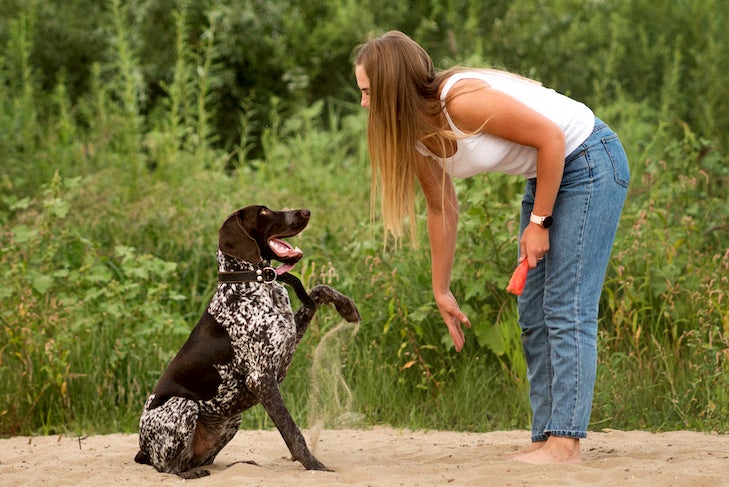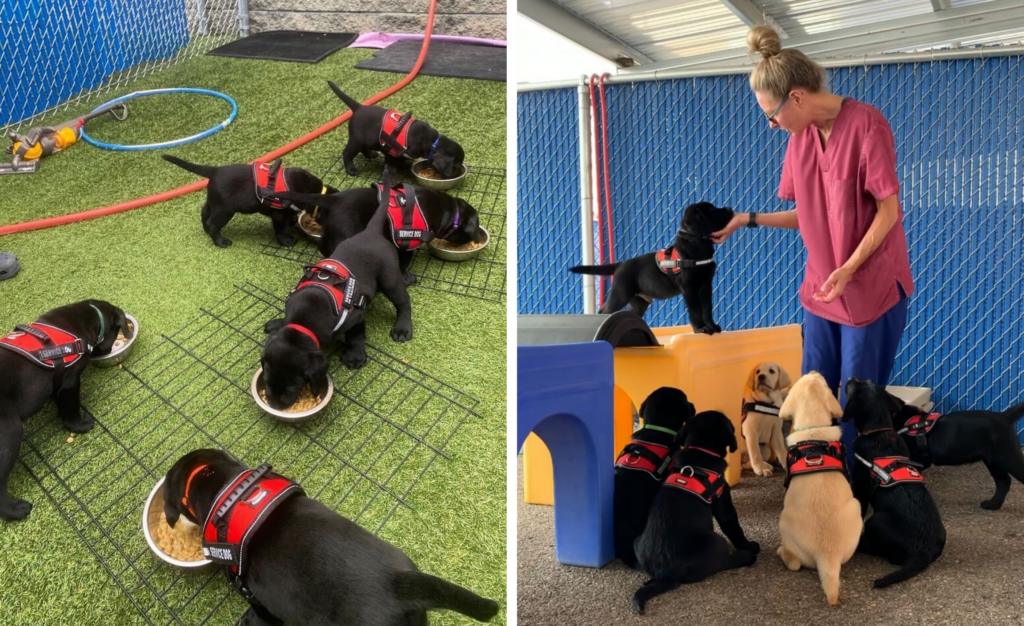Transform Your Dog's Behavior with These Proven Dog Training Methods
Transform Your Dog's Behavior with These Proven Dog Training Methods
Blog Article
Beginner's Guide to Successful Dog Training at Home
Successfully educating a pet at home requires a nuanced understanding of canine habits and reliable communication approaches. Developing clear training goals, using high-quality incentives, and keeping consistency across household participants are essential aspects. Incorporating training into daily routines can improve both involvement and retention.
Comprehending Canine Behavior
Understanding pet behavior is essential for efficient training and promoting a harmonious relationship in between human beings and their canine buddies. Pet dogs interact mainly through body language, articulations, and faces, making it important for proprietors to translate these signals accurately. Identifying habits such as tail wagging, roaring, or cring can offer insights right into a pet dog's emotion and intentions.

Usual behavioral problems, such as aggression, anxiousness, or extreme barking, frequently originate from misunderstandings or unmet demands. Observing and attending to these concerns quickly can stop rise and guarantee a favorable training experience. By cultivating a deep understanding of dog actions, proprietors can tailor their training techniques to match their canine friends, ultimately causing a pleased and well-behaved family pet.
Essential Educating Tools
A well-equipped training room can considerably boost the effectiveness of pet dog training in the house. Necessary training tools make certain that both the fitness instructor and the canine can engage in productive sessions that foster knowing and bonding.

Buying a durable leash and a comfy, well-fitting collar or harness is crucial for security and control. These tools help develop limits and guarantee the dog continues to be safe during training. In addition, a marked training area, devoid of interruptions, aids concentration for both the instructor and the canine.
Educating aids such as training pads, cones, or dexterity equipment can likewise enhance the experience by presenting variety and difficulties. Lastly, having a note pad or digital application for tracking progress can be vital, allowing you to keep in mind successes and areas for renovation. Using these necessary tools will certainly produce a positive training atmosphere and lay the structure for efficient understanding.
Creating a Training Regimen
Developing a consistent training routine is vital for reliable pet training in the house. A well-structured routine not just aids in reinforcing desired behaviors however likewise gives your pet with a complacency and predictability. To develop a reliable training routine, begin by determining details training objectives, such as basic commands, leash walking, or house-breaking.
Choose a marked time every day for training sessions, ideally when your dog is alert and responsive. Procedure needs to be short, about 5 to 15 mins, to maintain emphasis and avoid exhaustion. Consistency in timing and atmosphere will certainly boost your dog's knowing experience.
Integrate training right into everyday activities to strengthen abilities. Technique commands throughout strolls or nourishment, which incorporates learning into natural routines. In addition, continue to be adaptable and change the routine as essential, suiting your pet dog's energy degrees and mood.
Favorable Support Techniques
Favorable support techniques are basic to efficient canine training, advertising preferred behaviors through incentives instead than punishment. This method utilizes favorable stimulations, such as deals with, appreciation, or play, to motivate pet dogs to duplicate particular activities. The foundation of this method is timing; rewards need to be provided quickly complying with the desired actions to develop a clear association.
When implementing favorable support, it is important to select rewards that are inspiring for your dog. High-value deals with, such as small pieces of chicken or cheese, can be specifically efficient during training sessions. Furthermore, varying browse around here the incentives can preserve your dog's interest and excitement.
Begin with simple commands, like "rest" or "stay," and gradually development to much more complicated tasks. Consistency is essential; ensure that all household participants use the same commands and benefit systems to stay clear of confusion.
Moreover, it is important to continue to be client and stay clear of disappointment. Pets, like humans, discover at their own rate. By cultivating a supportive training atmosphere with favorable reinforcement, you can improve your pet's knowing experience while enhancing the bond in between you and your hairy companion, laying the groundwork for effective training outcomes.
Typical Training Difficulties
While educating a pet dog at home can be a satisfying experience, it commonly features a set of typical obstacles that can test both persistence and uniformity. One common concern is diversion. Dogs may become conveniently averted by noises, activities, and even fragrances in their setting, making it difficult to preserve their focus during training sessions.
One more obstacle is inconsistency in commands and reinforcement. If family members use different hints or rewards, it can confuse the dog and prevent development. Establishing a unified strategy is essential for effective interaction.
Furthermore, dogs can experience aggravation or tension, especially if they do not recognize what is anticipated of them. This can result in unfavorable behaviors, such as eating or barking.
Lastly, the timing of reinforcement is essential (Dog training). Postponed incentives can decrease the effectiveness of favorable reinforcement, as dogs might fail to attach the habits with the reward
Overcoming these obstacles needs dedication, clear communication, and an organized training strategy. Recognizing and attending to these typical barriers will lead the way for an extra satisfying and successful training experience in the house.
Conclusion
In conclusion, effective dog training in the house requires a comprehensive understanding of canine behavior and reliable communication approaches. By developing clear training goals and making use of premium treats along with favorable reinforcement, the training procedure comes to be much more rewarding for both the pet dog and the trainer. Consistency, persistence, and adaptability are essential elements that assist in discovering. Inevitably, integrating training into everyday routines improves the bond in between pet and owner, making the experience both here pleasurable and effective.
Developing a regular Check This Out training regimen is crucial for effective pet training at home.Favorable support methods are essential to effective dog training, promoting preferred habits via benefits instead than punishment (Dog training). By cultivating an encouraging training setting with positive support, you can enhance your pet's understanding experience while enhancing the bond between you and your hairy friend, laying the groundwork for effective training outcomes
In verdict, effective dog training at home demands a detailed understanding of canine habits and effective communication strategies. By developing clear training goals and making use of top notch treats along with positive support, the training process becomes a lot more gratifying for both the dog and the instructor.
Report this page